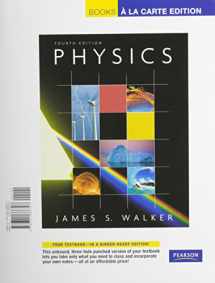
Statics: Analysis and Design of Systems in Equilibrium
ISBN-13:
9780471947219
ISBN-10:
0471947210
Edition:
Update
Author:
Benson H. Tongue, Sheri D. Sheppard
Publication date:
2006
Publisher:
Wiley
Format:
Hardcover
656 pages
Category:
Mechanical
,
Engineering
FREE US shipping
on ALL non-marketplace orders
Marketplace
from $92.25
USD
Marketplace offers
Seller
Condition
Note
Seller
Condition
Used - Very Good
Very Good; The Text Clean With No Highlight Remarks. 636 Pages With An Index. Revised Edition Hardcover
Book details
ISBN-13:
9780471947219
ISBN-10:
0471947210
Edition:
Update
Author:
Benson H. Tongue, Sheri D. Sheppard
Publication date:
2006
Publisher:
Wiley
Format:
Hardcover
656 pages
Category:
Mechanical
,
Engineering
Summary
Statics: Analysis and Design of Systems in Equilibrium (ISBN-13: 9780471947219 and ISBN-10: 0471947210), written by authors
Benson H. Tongue, Sheri D. Sheppard, was published by Wiley in 2006.
With an overall rating of 3.7 stars, it's a notable title among other
Mechanical
(Engineering) books. You can easily purchase or rent Statics: Analysis and Design of Systems in Equilibrium (Hardcover) from BooksRun,
along with many other new and used
Mechanical
books
and textbooks.
And, if you're looking to sell your copy, our current buyback offer is $0.98.
Description
Statics: Analysis and Design of Systems in Equilibrium, by Sheri D. Sheppard of Stanford University, and Benson H. Tongue, University of California, Berkeley, offers a student-focused approach to Statics. With a strong emphasis on drawing free body diagrams, use of a structured problem-solving methodology, inclusion of real-world case studies, and robust pedagogy coupled with a truly engaging writing style, reviewers alike have praised this new Statics text. Additionally, this first edition has benefited from a comprehensive and thorough accuracy check by 15 experienced professors, and has been reviewed by more than 200 Statics and Dynamics professors.
The text seeks to improve students’ abilities to map their understanding to more realistic engineering situations, enabling them to more effectively break down complex problems into manageable parts, and thus, become more effective engineering students and ultimately, professional engineers.
The authors do not compromise on rigor. Instead this series demonstrates the required rigor in the larger context of engineering work, decision making, problem solving, and understanding and impacting the man-made world.


We would LOVE it if you could help us and other readers by reviewing the book
Book review

Congratulations! We have received your book review.
{user}
{createdAt}
by {truncated_author}



